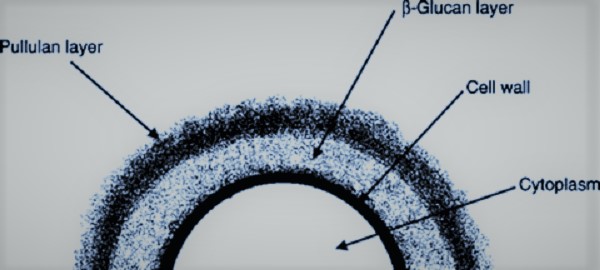| Pullulan |
|
1: What is pullulan Pullulan is an naturally occurring polysaccharides, an extracellular glucan associated with cell wall assembly and introcellular adhension for organisms such as fungus Aureobasidium pullulans. As an edible, bland and tasteless polymer, the chief commercial use of pullulan is in the manufacture of edible films that are used in various breath freshener and oral hygiene products such as Listerine Cool Mint PocketPaks. As a food additive, it is known by the E number E1204. |
 |
|
2:
Chemistry CAS number [9057-02-7]; Molecular formula (C6H12O5)n Pullulan is a polysaccharide polymer consisting of maltotriose units, also known as α-1,4- ;α-1,6-glucan. Three glucose units in maltotriose are connected by an α-1,4 glycosidic bond, whereas consecutive maltotriose units are connected to each other by an α-1,6 glycosidic bond. |
 |
|
3: Why pullulan The reason that we choose pullulan is due to following factors: 1) Pullulan is more natural, involving no toxic chemicals, much less environment polluting in its production process; 2) Pullulan possesses more potential for price reduction when produced in mass, because the fermentation technology used is widely in growing pullulan fungi has been perfected through mass production of food products; 3) Pullulan film is 300 times stronger oxygen barrier than HPMC film, 9 times stronger than gelatin film; 4) Pullulan is much more inert than gelatin or HPMC, so there is no interaction with products it intended to deliver. |
|
4: How pullulan is made Commercially, pullulan is produced by growing fungus Aureobasidium pullulans on the carbohydrate substrate (sugar or starch). After harvest, Aureobasidium pullulans cells are ruptured and then disgarded, the water soluble extracellular material can be extracted by either ethanol precipitation or by water based ultra filtration to extract pullulan. Pullulan is refined by passing ion-exchange further filtration to exclude unwanted colorants, peptides and ions. There are no environment damaging waste, or carcinogenic material used. |
|
5: Further readings 1) Scientific Panel Reports of EFSA on pullulan www.efsa.europa.eu/en/efsajournal/pub/85 2) Capsugel's Pullulan petition to NOP board3) Pullulan: An exopolysaccharide and its various applications Vipul D.Prajapati <Carbohydrate Polymers> Volume 95, Issue 1, 5 June 2013, Pages 540-549 |
